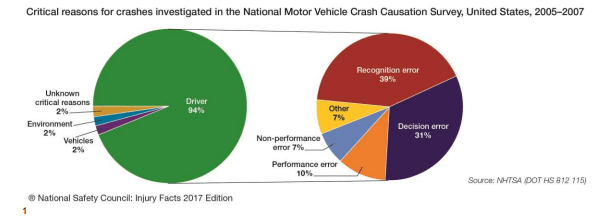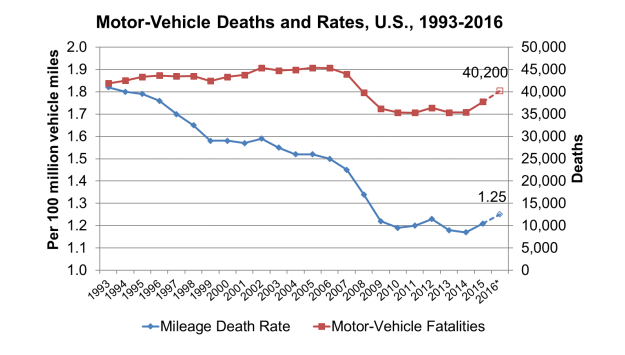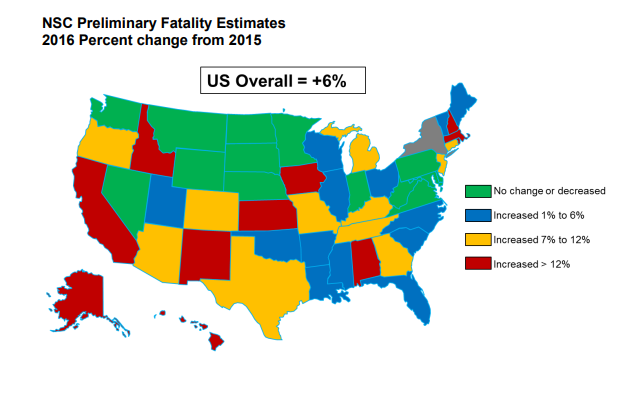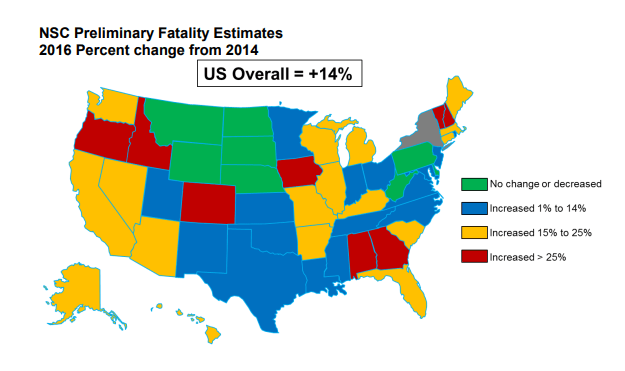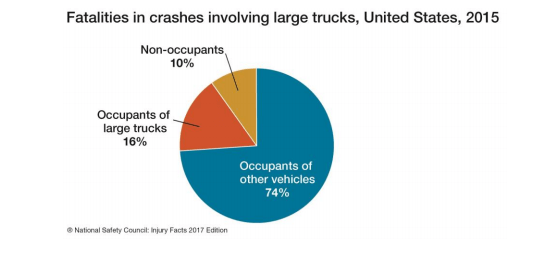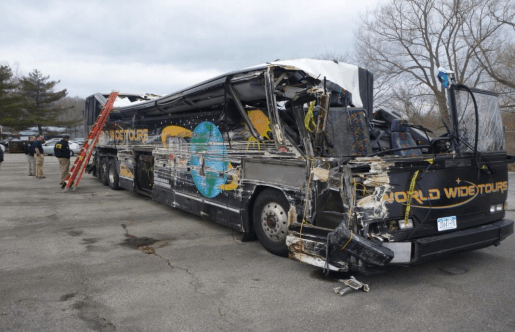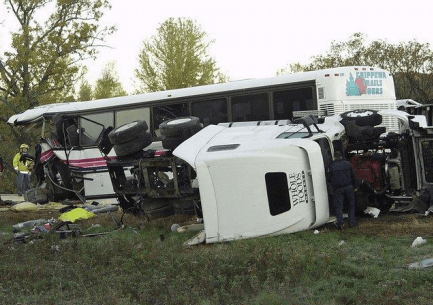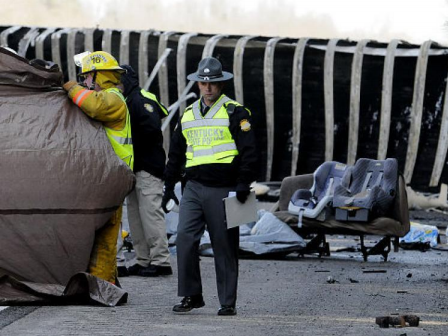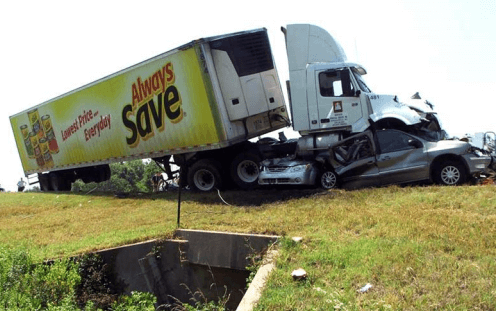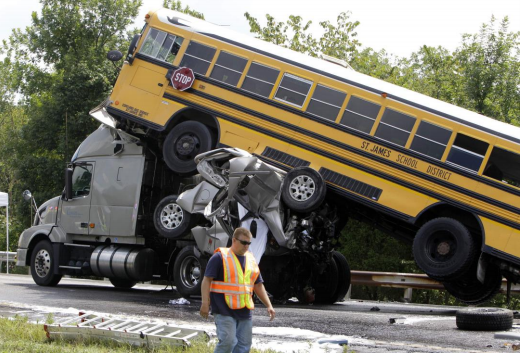Safety Evaluation Report and Data Recorders
The proposed legislation is intended to set the framework to aid the inevitable transition to ADAS technologies and fully automated vehicles. Our roadways were not made for passenger and commercial vehicles to operate independently of each other, and both types of vehicles are being tested at this time. Therefore, the policies outlined in this legislation should apply to all vehicles.
The current draft legislation establishes greater transparency around the development of ADAS and automated vehicles by mandating the safety evaluation report (SER) that outlines reporting requirements for manufacturers. The bill also includes the use of a data recording device, something which is already widely used in the automotive industry today and yields valuable data in crash reconstruction efforts.
Electronic logging devices (ELDs) and electronic data recorders (EDRs) provide a window into the human-machine interface with advanced vehicles. The knowledge gained from these devices allows manufacturers to be nimbler and make adjustments in near real-time to improve safety based on what is actually occurring in operation, rather than making changes based on assumptions and estimations that must be accommodated in a later model year. To this end, Congress should facilitate data sharing as widely as possible by requiring that manufacturers provide accessible, standardized data to law enforcement, state highway safety offices, investigators, insurers, and/or other relevant stakeholders. Collecting and sharing de-identified data about near misses and other relevant problems would also help to aggregate vital performance information for the motor vehicle industry, allowing it to take proactive steps based on leading indicators rather than waiting for a crash or a series of crashes to occur. Leading indicators are “proactive, preventative and predictive measures that monitor and provide current information about the effective performance, activities and processes of a … system that drive the identification and eliminate or control of risks.” The NSC Campbell Institute, a leader in environmental, health and safety, states that tracking leading indicators allows world-class safety organizations to make further improvements to their safety records.
Acquiring an understanding of what happens when systems perform as intended, fail as expected, or fail in unexpected ways yields is valuable information for manufacturers– some of whom have common suppliers—and researchers and the safety community in analyzing the safety benefits and potential limitations of these technologies as they continue to mature. Further, in-service data, as well as near miss and post-crash information sharing, can help civil engineers and planners design better and safer roadways, as well as help safety and health professionals design better interventions to discourage risky driving or affect the behaviors of other roadway users.
De-identified data sharing has existed in the aviation industry for many years and proven highly successful. The Aviation Safety Information Analysis and Sharing (ASIAS) system allows for sharing of de-identified data across the industry, making it possible for manufacturers, operators, researchers, regulators and other stakeholders to identify trends and act on them. Similarly, analysis of de-identified data in the vehicle industry will provide windows into leading indicators, increasing the potential to save lives.
While there are competing priorities regarding protecting personal privacy and proprietary systems or designs, NSC believes that safety should be the ultimate priority. Requiring the SER and data sharing will aid in improving safety.
Education and Training
Another encouraging component in the draft legislation is the creation of the consumer education workgroup focused on new safety technologies. With nearly 17.4 million new passenger cars and trucks sold in 2015, understanding the technology on these vehicles is necessary, yet a University of Iowa survey found that 40 percent of respondents reported they had experienced a situation in which their vehicle acted in an unexpected way. When this occurs in a real-life driving situation, among multiple drivers and a variety of vehicles, it can lead to disastrous outcomes.
The National Safety Council and our research partners at the University of Iowa are focused on educating consumers about in-vehicle safety technology through our MyCarDoesWhat campaign. This brand agnostic education campaign informs drivers about how safety technologies work, how to best interact with them, and how to identify situations when the technology may not perform optimally and should not be relied upon. Because of the need for continued human involvement in the operation of many of these features, the campaign tagline is, “You are your car’s best safety feature.” Too often, marketing and media reports using terms such as “autopilot” and “autonomous” only confuse consumers about the capabilities of their vehicles and contribute to losses of situational awareness around the driving task.
Drivers cannot effectively use these life-saving technologies if they do not understand both their functions and limitations, and these education efforts should be extended to the safe use of automated commercial vehicles. The AV policy proposes that this education be delivered in multiple ways, including computer based, hands-on and virtual reality training, and other innovative approaches. The MyCarDoesWhat education campaign follows that approach and has developed a virtual reality module. Further, we recommend ongoing evaluation to determine the effectiveness of the various messages, methods of delivery and media so they can be improved over time. NSC appreciates the recognition by the Senate that education is a necessity if we are to realize the life-saving effects of these vehicles.
The AV START Act
As previously mentioned, there are several good provisions in the draft bill that the National Safety Council would like to highlight.
- Including whether a vehicle in a crash is equipped with some automation on postcrash investigation reports. NSC called this out in our report “Undercounted is Underinvested: How Incomplete Crash Reports Impact Efforts to Save Lives” earlier this year. This data can be vital to improve safety systems.
- Improving research on the human machine interface to ensure drivers remain engaged in the driving task before full automation. In too many other modes of transportation, users have become confused about what technology is “saying” to them and results have been fatal. Standardizing these alerts (visual, aural, haptic) could decrease this confusion.
I offer some additional provisions for your consideration to include in the legislation.
- Reporting of certain types of crashes, such as fatal and serious injury crashes, to a Department of Transportation database can help ensure correct information is disseminated about these events. We have already seen the overwhelming media attention on automated vehicle crashes. By creating a database, one place would exist for locating common and accurate information.
- Testing on public roads should be reported to the states in which tests occur. Adding this level of transparency can help states be more involved, especially if they must send resources to respond to a testing event.
- Encouraging the designation of a common nomenclature and performance standard for each safety feature or system so drivers can better understand and compare performance.
- Tying ADAS and automation components to vehicle identification numbers (VIN) so that more complete crash reporting and analysis can be completed.
- Requiring rulemaking to mandate safety technology with proven results to require it on all vehicles.
Technology in Transportation
Improvements in technology and safety in transportation have historically gone hand-inhand. During my decade at the National Transportation Safety Board, the NTSB called for many safety improvements that would reduce or mitigate fatal transportation incidents, some of which were at least partially attributable to predictable and preventable human behavior. Technology like auto-pilot features in aviation control airspeed and heading, leaving human operators free to monitor larger systems and issues to ensure safe flight. Similarly, positive train control is still being implemented on passenger and freight railroads but will certainly prevent numerous collisions. Electronic charts standardize routes and transponders in the maritime industry projecting the routes other vessels will travel. This Committee oversees all of these industries and these very technologies are ones you have debated and mandated. You know that each advancement in technology has impacts, some of which are known while others may result in unintended outcomes.
At this point in the deployment of vehicle safety technology, human drivers are still ultimately responsible for the safe operation of their vehicle and often need to intervene in certain conditions. We can expect this intervention will continue to be necessary as technologies mature. However, we also fully understand that this may not always be the case. At some point drivers, including those who may be impaired, may do more harm than good.
Currently, vehicle manufacturers are making different choices about how to develop fully automated vehicles. Some manufacturers believe that human drivers will always be required behind the wheel and that highly or fully automated features will serve to assist the human or take over when the driver fails to take corrective action. Others see the role of the traditional driver disappearing entirely, with vehicles providing safe transportation and mobility through artificial intelligence – all by themselves. NSC believes that both should be seen as viable courses of action and thus addressed in any new policies.
There is real debate today as to whether fully self-driving vehicles will actually achieve widespread acceptance in the coming decades. Some people believe that American drivers, while willing to embrace systems that provide them assistance, will always want the option of hands-on driving. Other people believe that it may actually be safer for humans to simply be passengers in fully automated vehicles.
Regardless of the level of autonomy, we know that active safety system integration into the U.S. fleet will be more robust in years to come, and as these features continue to penetrate the driving world, we can expect to see changes in the very definition of the word “driver.” In the last few years, NHTSA offered that there may be a day when “driver” may refer to an automated system rather than a human being. Today, some states are contemplating this same idea, especially those who run the licensing systems and law enforcement charged with enforcing state regulations. These state leaders, along with other federal and state entities, should cooperate and collaborate, moving beyond their traditional roles to respond to the new questions rather than addressing them on a piecemeal basis.
Finally, one of the biggest challenges in moving from level 1 to level 4/5 vehicles is successfully identifying the challenges and improvements needed for the humanmachine interface to be successful. In other industries, such as aviation, there have been many lessons learned regarding mode confusion and overreliance on automation. We must recognize that the most dangerous environment will exist when both the human and machine are involved in the safe operation of a vehicle. The greatest risks are not when one or the other has sole responsibility for the vehicle, but when the control is shared. A “driver” whose role is primarily to serve as a safety monitor, always onguard in case of a system malfunction or other emergency, will be susceptible to boredom, fatigue, and/or distraction, all of which may contribute to a more dangerous situation.
In order to save lives on our roadways—the most dangerous way to travel in this country—all options should be at the disposal of policy makers. If necessary, NHTSA must use its authority to address defects quickly and effectively, sharing as much information with the public as possible.
NTSB-NSC Roundtable on Safety Technologies in Large Trucks
On July 24, NSC and the National Transportation Safety Board (NTSB) co-hosted a roundtable discussion with nearly two-dozen fleet managers, vehicle manufacturers, government officials, researchers, software experts, safety advocates and more. The panel discussed strategies to increase adoption of ADAS in commercial motor vehicles.11 NTSB has recommended advanced technology on CMVs since 1995 because of the life-saving potential of this technology, and this issue is currently on its Most Wanted List of transportation safety improvements.
The NTSB-NSC roundtable discussion provided three key takeaways. 13 First, technologies exist today that can reduce both the frequency and severity of crashes involving large trucks, saving lives and preventing injuries. Some of the lifesaving technologies available for large trucks include automatic emergency braking, forward collision warning, lane departure warning and blind spot monitoring. These technologies assist – but do not replace – the driver. Roundtable participants who had investigated fatal crashes said many of those tragedies could have been mitigated or prevented entirely by collision avoidance technologies. However, the penetration rate of these technologies in large trucks is less than 10 percent.
A second takeaway from the discussion centered on the importance of proper training for drivers. Drivers must use new technologies appropriately, and the threat of overreliance on new technologies is legitimate and must be addressed in training sessions. For example, a truck equipped with electronic stability control does not give a driver freedom to go faster around curves. Likewise, a truck that features collision avoidance technologies does not clear the way for a driver to be drowsy or distracted behind the wheel. Drivers must remain alert and attentive at all times even with new ADAS features in place.
The third and final takeaway was that manufacturers, carriers and others who work in the trucking industry can take the lead in this life-saving mission. There is power in partnerships. Regulations could speed the adoption of ADAS in large trucks, but nothing is preventing fleets from equipping new vehicles and retrofitting old vehicles with some of these technologies. There is a cost component to this investment, but one trucking company at the roundtable reported a significant return on investment. After installing collision avoidance technologies, the company recorded a 70 percent reduction in frequency and a 95 percent reduction in severity of crashes. Not only did this keep both its employees and the public safer, but also cut down drastically on the legal, health care, insurance and operational costs associated with crashes. Another participant noted that costs associated with a single crash can destroy a small fleet or an owneroperator.
NTSB Commercial Motor Vehicle Crash Investigations
As mentioned earlier, NTSB first recommended advanced technology in vehicles over 20 years ago in 1995, calling on U.S. Department of Transportation to test collision warning systems in commercial fleets. NTSB specifically singled out commercial operations in this initial recommendation, and since that time, NTSB has expanded its recommendation to include passenger vehicles.
While at NTSB, I was the unfortunate witness to many crashes that could have been prevented by advanced technology that has been available for years. The crashes cited below represent just a few involving commercial vehicles.
Bronx, New York: 15 dead and 18 injured. This crash could have been prevented or mitigated by lane departure warning, adaptive cruise control (ACC), and a speed limiter. The driver was operating at 14 mph over speed limit and run off the road due to fatigue.

